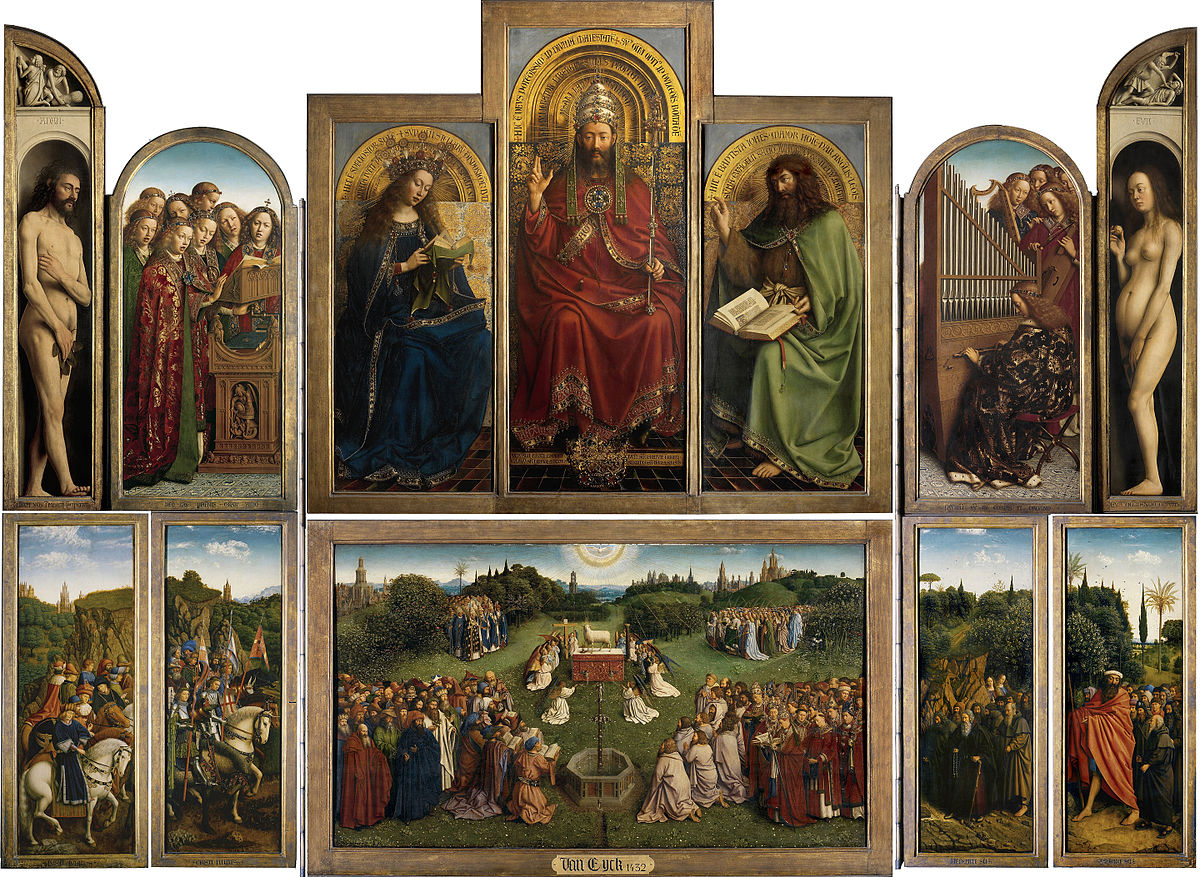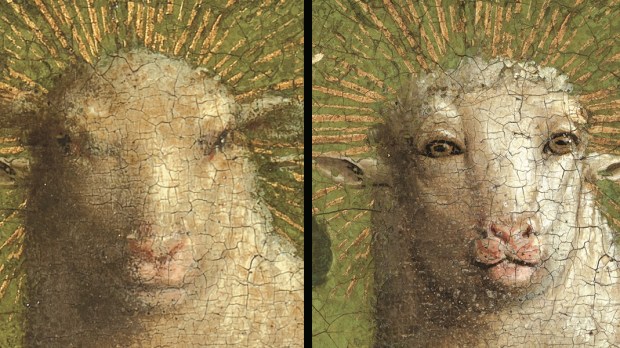Restorers working on the famous Ghent altarpiece, also known “The Adoration of the Mystic Lamb,” discovered that the lamb was painted over in the 16th century in what, it now appears, was a botched attempt at restoration.
The original lamb, painted by the Flemish brothers Hubert and Jan van Eyck in the 15th century, was discovered underneath layers of paint, and found to have a decidedly different character from its pretender.
While the more recently rendered lamb appeared to be ““an impassive and rather neutral figure,” according to the restorers, the original packs more of a punch.
The newly revealed lamb casts “an intense gaze and is characterized by a graphically defined snout and large, frontal eyes, drawing onlookers into the ultimate sacrifice scene,” said the restorers in a statement reported by Flanders Today.
The lamb is the centerpiece of the painting, which depicts a gathering of saints and sinners who have come to adore the Lamb of God.

Koenraad Jonckheere, professor of art at Ghent University, told Flanders Today that the 16th-century overpainting substituted a realistic animal for a figure that was meant to symbolize Jesus Christ.
“Their careful overpainting campaign subtly adapted the shapes to the taste of the time and to some extent neutralized the Van Eycks’ intense and humanized identification of the Lamb into an expressionless animal, seemingly unaffected by what was about to come,” said Jonckheere.
Restoration work on the Ghent Altarpiece has been underway since 2012, after a team of experts discovered that 40 percent of the 20-panel altarpiece had been overpainted, some parts as recently as the 19th century.
In the 1950s, restoration work revealed the original set of ears on the lamb. Out of fear that the painting would be damaged, restorers did not attempt to remove the second set of ears, leaving the lamb with four ears.
The restored panels on outer doors of the cabinet-like piece are on view at Ghent’s Sint-Baafs Cathedral. The inner panels are currently being restored and have been temporarily replaced by copies.

